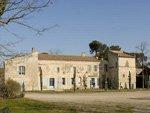
Walk in the heart of the Verdier marshes
8 points of interest
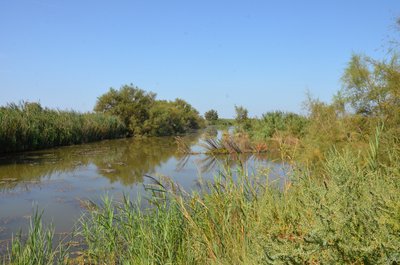
Marais du Verdier - ©Juliette Primpier - PNR Camargue  Water and rivers
Water and riversThe Verdier marshes
Acquired in 2003 by the Tour du Valat (research center for the conservation of Mediterranean wetlands), Verdier marshes are made up of four old fishponds where one can observe many water birds. Scrapers, water bodies, tamarisks: The 120 ha of marshes offer a diversity of environments. Le Verdier takes its name from the "La Verdière" canal which brings water from the Rhône. The inhabitants of Sambuc and the Tour du Valat participate in the management of the different basins.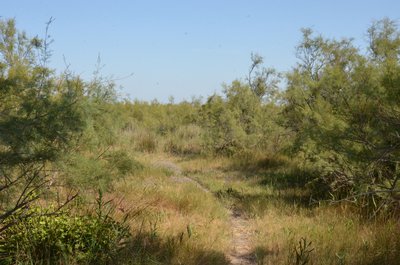
Palunette - ©Juliette Primpier - PNR Camargue  Fauna
FaunaThe Palunette
The Palunette is a basin that covers an area of ??5 ha. Its dense vegetation consists of tamarisks and reeds. In the morning or in the evening, It is not uncommon to observe the wild boar paddling noisily. In the spring, listen the Eurasian Bittern singing, his song is like a foghorn. The Eurasian Bittern is a species of bird wader the Ardeidae family (herons, egrets). He has a thick neck and short legs with long fingers.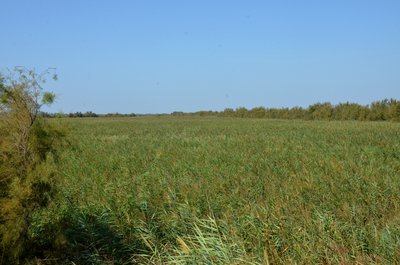
Roselière du Pesquier - ©Juliette Primpier - PNR Camargue  Flora
FloraReed
The Reed is considered as a real treasure of the Camargue. Since ancient times it is used for the manufacture of roofs, palisades. The reed is harvested in the reed beds in winter by the sagners. These reed beds allow birds to feed, protect themselves and nest their young ones. The traditional activity of reed cutting has been stopped since 2010 in the Verdier marshes in order to protect the nesting of birds in the Pesquier reed bed.
Bassin du Pesquier - ©Juliette Primpier - PNR Camargue  Fauna
FaunaThe Pesquier
The basin located in the north is the Pesquier. It is a basin of reeds which remains flooded. Many waterfowl such as water warblers, herons, rales, find in these reeds an area favorable to their nesting. They build their nests on the stems or use them to build their nests. Invertebrates (fry, amphibians) come to take advantage of the reeds of the Pesquier basin.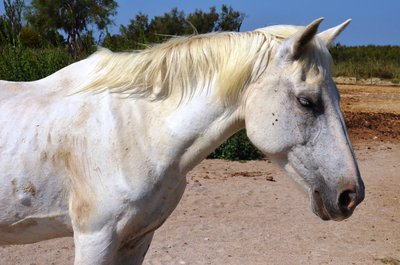
Cheval de Camargue - ©Juliette Primpier - PNR Camargue  Elevage et pastoralisme
Elevage et pastoralismeBulls and horses from Verdier Marshes
From May to September, "Camargue" cows of a manade are stocked in the western marshes. Their presence prevents vegetation and reeds from growing. With regard to the horses, they graze on the whole site. They belong to the association members of "Marais du Verdier". Dewormers, a substance that destroys and expels intestinal worms, used to treat horses are not very toxic to preserve insects causing the degradation of dung and manures.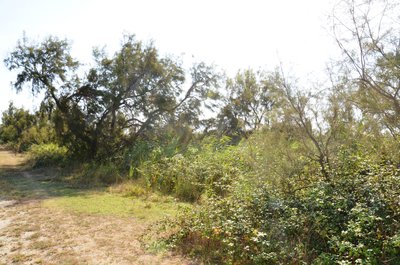
Tamaris - ©Juliette Primpier - PNR Camargue  Flora
FloraThe tamarisk
The tamarisk grows in the regions at the edge of the sea. Very widespread in the Camargue, it is a small tree with very fine branches, growing in hedge around the ponds and near the lagoons. It is one of the few trees capable of supporting soil salinity. This tree with pink flowers, which appear in spring, concentrates the salt in its oldest leaves, which then evacuate it by falling. It has medicinal properties to help treat colds and tonsillitis.
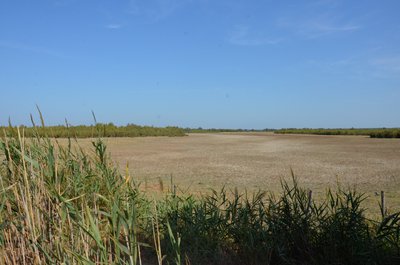
La Petite Baisse sèche en été - ©Juliette Primpier - PNR Camargue  Water and rivers
Water and riversLa Grande et Petite Baisse
La Grand Baisse is a marsh temporarily flooded. In the 1960s, this marsh became partially a fish pond. Flooding of the marsh benefited waterbirds. The present bulls maintain the vegetation. An assec is ensured in summer by a adapted hydraulic management. La Petite Baisse, more in the center, is also dry in summer. Steppe birds have made it a feeding area: scimitar oedicnema, collared frog. Coots and mallards come to nest.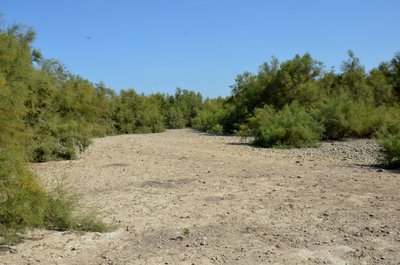
Marais des Enganes - ©Juliette Primpier - PNR Camargue  Flora
FloraLes Enganes
This marsh is powered by the rain. The Horses of the association members "Les marais Verdier" maintain the vegetation. There are salt meadows composed of Aster of Tripoli, Barley Sea and Arroche reclining. In the fall, samphire is dominant. In summer, the central part of the marsh is devoid of vegetation because of trampling horses. In fact, mosquitoes and flies do not come there and the horses then benefit from de-wetting dust baths.
Description
1 - At the intersection of the two roads, turn left, go to the end of the path and then retrace your steps to point 1. Continue the marsh tour.
2 - at the intersection of the two paths, turn to the left. Go along the small downhill on the left and the Enganes on the right, go to the end of the path and then retrace your steps to point 2. Continue the turn to complete the loop and reach the finish point.
- Departure : Parking on the place of the village, the SAMBUC
- Arrival : Le Sambuc
- Towns crossed : Arles
Forecast
Altimetric profile
Recommandations
Information desks
the Camargue museum
Mas du pont de rousty, 13200 Arles
Remember to visit the Camargue museum! It is located next to the administrative centre of the Camargue Nature Park.
OT Salin-de-Giraud
1 Boulevard Pierre Tournayre, 13129 SALIN DE GIRAUD
Transport
Access and parking
Parking :
Report a problem or an error
If you have found an error on this page or if you have noticed any problems during your hike, please report them to us here:

